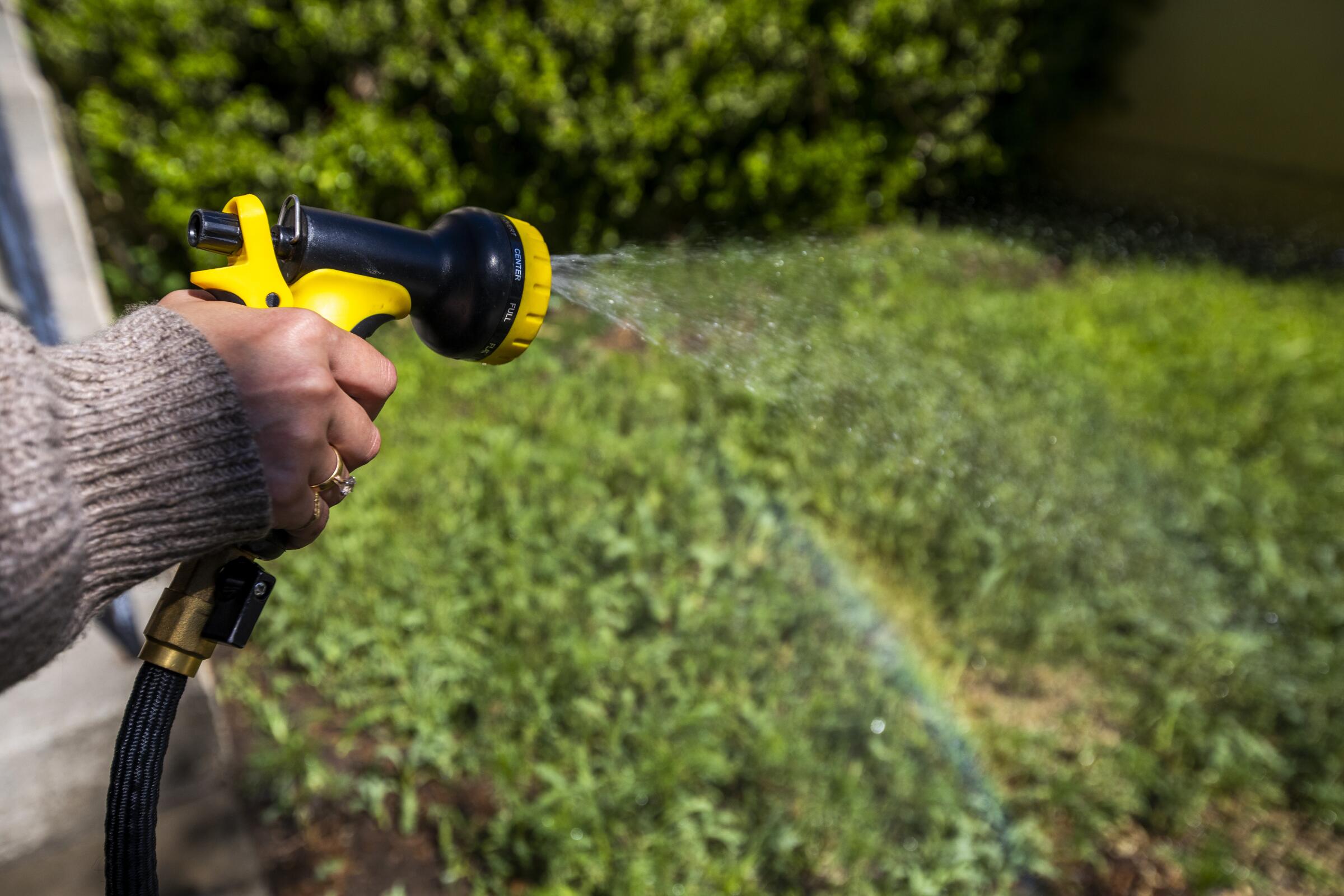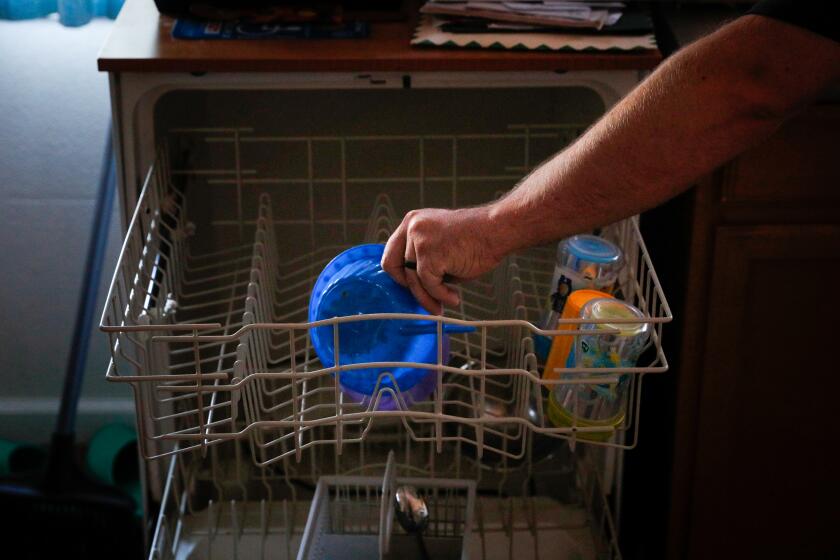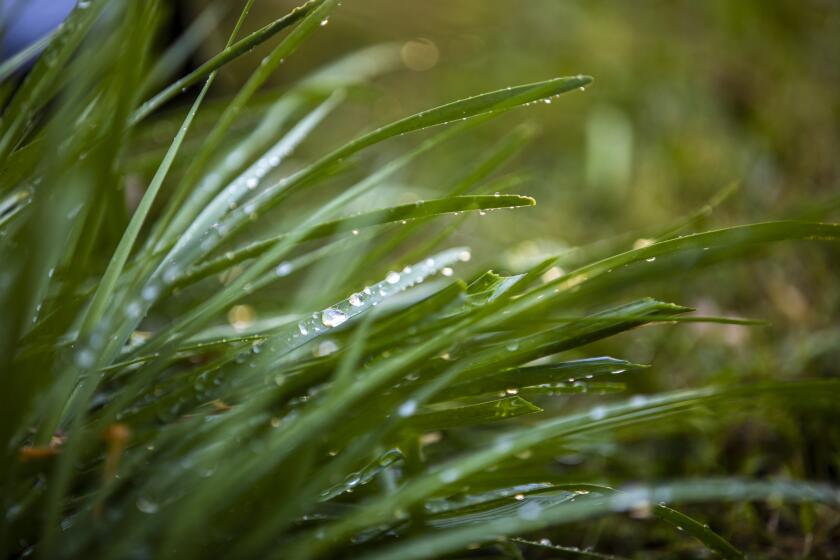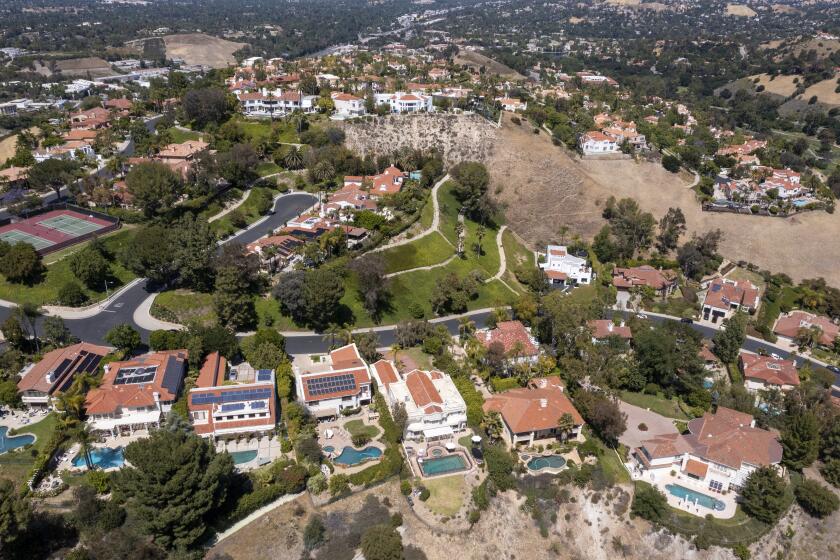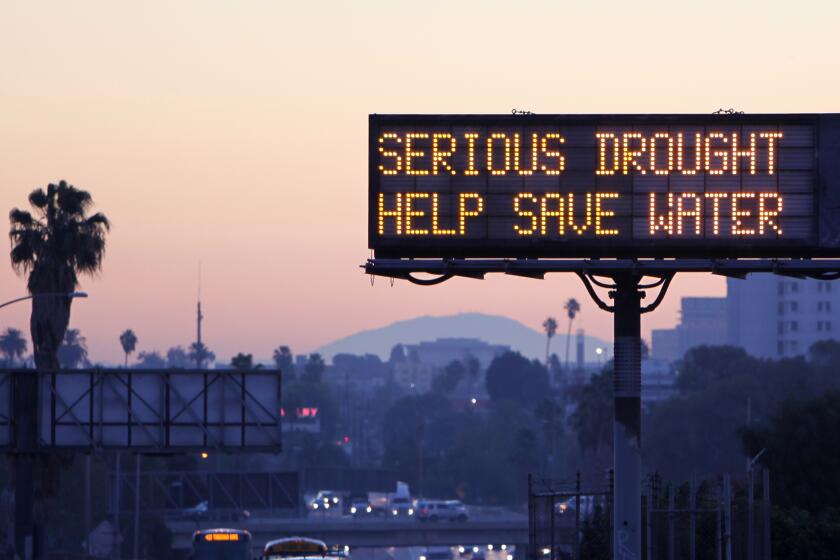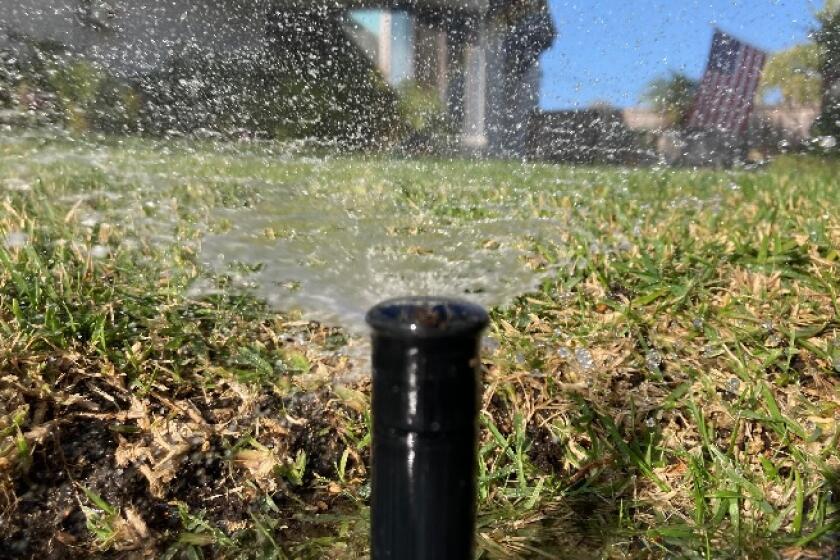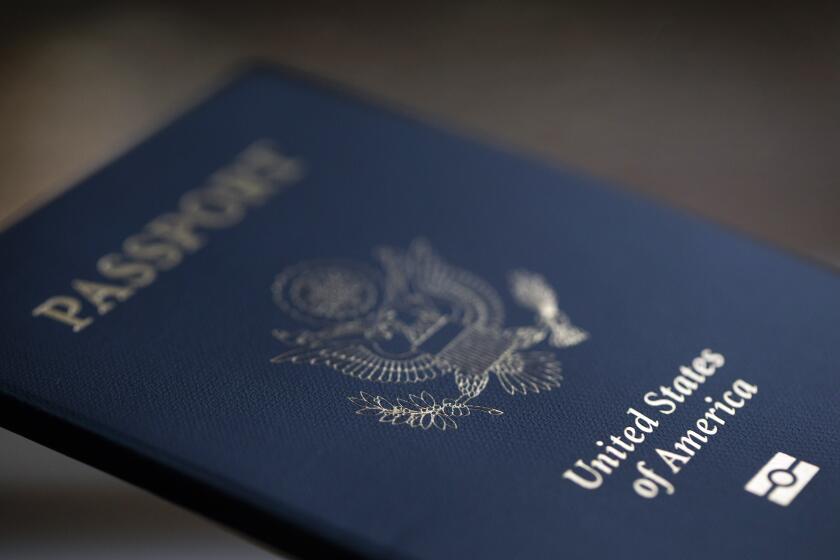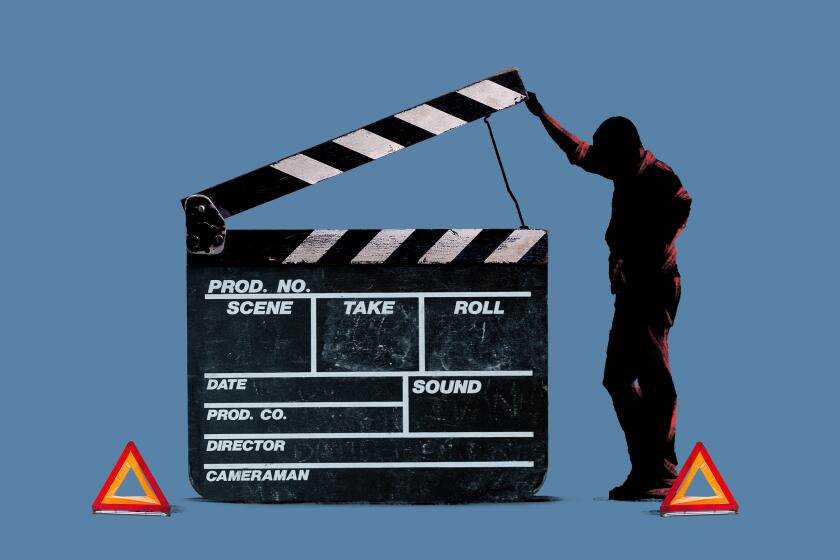Matthew Ballinger is a former deputy editor at the Los Angeles Times. Ballinger joined The Times in 2008 and held roles on several teams — including Climate, Health and Science; the homepage; and copy editing — as well as founding the Utility Journalism Team and working on the rollouts of several newsroom technology platforms.
- Share via
1
Are you watching your lawn slowly crisp and turn brown? Are you positioning buckets under your spigots to catch every spare drop of water? Are you trying not to break a sweat because you’ve cut your showers to two a week? (Yikes!)
These are just some of the ideas L.A. Times readers sent us when we asked them to tell us how they’re conserving water. It’s an urgent question, with Southern California water authorities announcing new restrictions to deal with the drought and reduced water supply.
And while many readers called on Californians to make major lifestyle changes, others offered common-sense tips or new twists on familiar ideas that reduce the amount of water that goes down the drain.
More than a few of you noted that individual water conservation, though valuable, isn’t enough, and argued that policymakers need to do more. For example, Christiane Badgley of Long Beach wrote, “We need massive change. [The] L.A. Times recently wrote about Israel’s water re-use and state-of-the-art drip irrigation — this is where California needs to go. And we need to raise water prices enough to discourage agribusiness from growing alfalfa and other thirsty crops.”
That’s complicated. Agriculture is an important part of the California economy, and crops such as alfalfa, rice and almonds are like other foods we consume — their production requires water. Agriculture is by far the largest user of water in California. Kelly Sanders, associate professor of civil and environmental engineering at USC, told The Times last year that about 80% of water used in the state goes toward agriculture. The rest is mostly urban usage, she said.
What’s abundantly clear, though, is that Southern California does not have an abundance of water — and probably won’t for some time, if ever again.
Here’s how L.A. Times readers are adapting. Got more ideas? Send them to us.
As California drought worsens, the DWP in Los Angeles will limit outdoor watering to two days a week, with watering capped at eight minutes per station.
2
Shower hacks
Many readers are saving every drop they can when showering and bathing.
- Collect the water in the shower as it’s heating up in a bucket or watering can. Use it outside on the plants.
- Limit shower length. Some people suggested five minutes or less: “I’m not always successful, but I try,” wrote Amy Wolfberg of Los Angeles.
- Take navy showers. Richard Tapia of Palmdale explains: “I turn the [water] on and off during my shower; get wet, then turn off water, then lather up, and then rinse.” Kate Larson of San Diego said her family “installed a hand held shower that has a shut off valve that allows you to turn off water when you don’t need it during the shower.”
- Install efficient shower heads: L.A. Department of Water and Power customers can get free shower heads that the utility says will save as much as a gallon per minute, which can add up to more than 5,000 gallons a year.
Are you using your dishwasher correctly? Are you using it at all? Everything you wanted to know about washing dishes efficiently during a drought.
3
Dish racks (and beyond)
Whether they have a dishwasher or wash by hand, readers are getting creative about saving or reusing the water that cleans the tableware.
- Run the dishwasher only when full.
- Don’t rinse dishes before loading them into the washer. This reader tip may seem counterintuitive, but it’s true. The Wall Street Journal, Good Housekeeping, Consumer Reports, Popular Science, Lifehacker and others concur. Check your appliance’s user manual for details about detergent and maintenance.
- Don’t run the faucet while washing dishes by hand. Use the two-basin method, or at least shut off the tap when not rinsing. Dredge up a 2015 episode of “Going Deep With David Rees” for more information than you ever wanted about washing dishes by hand.
- For more on washing dishes as efficiently as possible, The Times’ Ada Tseng asked the experts.
4
Laundry, no one’s favorite chore
- Do the laundry less often. You already hate doing it, so make sure you have a full load before running the washer.
- Wash your clothes less frequently too. Nikki Martin of Davis suggests wearing clothes, especially jeans, more times between washes. But first, make sure they pass a visual and, umm, olfactory test.
California water regulators have banned the watering of decorative ‘nonfunctional’ grass at commercial, industrial and institutional properties.
5
Yard truths
- No more grass lawns. Readers say it’s time to stop watering, to rip out your grass and to replace it with California-native and drought-tolerant plants.
- “We moved into our house 1.5 years ago and haven’t watered the lawn since we moved in,” Rachel Paterno-Mahler of West L.A. wrote. “We are about to re-landscape with drought-tolerant plants. My advice is to stop watering your lawn. It will also cut down on the mosquitos, because there will be less standing water. Seriously, stop watering your lawns.” Hard to argue with fewer mosquitoes.
- “We bought our home last spring, removed the lawn, and took a class at the Theodore Payne Foundation to learn how to efficiently water a California native-plant garden,” wrote Sarah Lariviere of Burbank. “In the fall, we planted mostly natives, along with fruit trees and drought tolerant Mediterranean plants, and we sowed a ton of native wildflower seeds right before the big rain in October. Spring has been phenomenal — tons of flowers, bees, birds. Neighbors stop to tell us how much they love the garden. We got a rebate from the SoCal WaterSmart Turf Replacement program that covered all our costs. And we never have to mow a lawn again.”
- “I’m taking care of my mother’s house at the moment: I don’t water the lawn at all. It’s dead,” Badgley of Long Beach wrote. “Some neighbors have made remarks. Oh well. As for the garden, it’s a once-a-week deep watering. The plants that have died aren’t suited for this climate.”
- If you’re keeping the lawn, consider watering it less often or more efficiently — for example, with drip irrigation instead of sprinklers. You also might look into a gray water system for your trees and shrubs.
- Use a deep watering technique for the plants you’ve kept. Jason Kinsella of Eagle Rock shared how he does it: “When I do water (trees, vegetable garden, etc.), I use buckets with a small hole in the bottom for a slow deep watering. I use much less water that way, and it trains the plants to grow deep roots which gets them through the hot dry summer.”
- For more on what to do with your lawn and garden, The Times’ Jeanette Marantos and others have expert advice.
Water agencies and officials are working to get the message out on the importance of trees and keeping them alive during the drought.
6
Yes, we’re going to talk about toilets
But only because you brought it up first.
- Flush only when necessary. Readers had a couple of colorful ways to remember: “If it’s yellow, let it mellow” — although you should suspend this practice when expecting guests, noted a reader in La Cañada Flintridge. And: “If it’s pee, let it be. If it’s poo, flush it through.” Thanks for that one (I think), Pete Navarro of El Sereno.
- Replace very old toilets. Modern toilets should use less than two gallons per flush.
7
Dirty cars for the drought
- Don’t wash your car. “I haven’t washed my car since the Before Times,” wrote Jeremy Windle of San Pedro, “so there’s that.”
- Try a low-water car wash product. Only one reader offered this tip. I’d never heard of such a thing, but a little online sleuthing turns up several products. The Drainbo Extreme Water Saving Car Wash Product, for example, claims that you can get your car clean as a whistle with just 16 ounces of water. If you try one of these, let us know how it goes.
Why did Californians ignore Gavin Newsom’s water conservation plea? In a drought, conservation messaging needs to be sharper — and even a little terrifying.
8
Every little drop
- Check for leaks. This is actually a big one, as a leak can waste many gallons of water a day.
- Reuse the cats’ and dogs’ water. Water indoor plants when replacing water in pets’ bowls.
- Didn’t finish a glass of water? Give a small drink to a nearby plant.
- “Less water, more Chardonnay.” So says Dave Ross of Orange.
9
A change in thinking
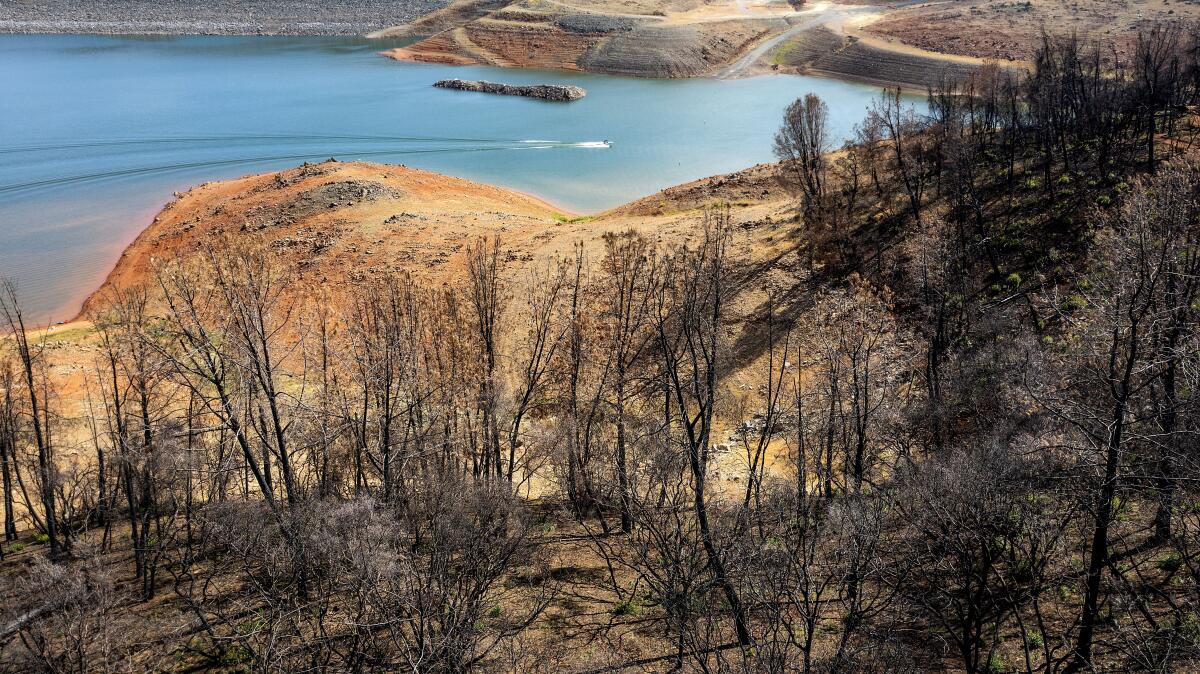
Lake Oroville, seen last year, and another major California reservoir are at critically low levels.
(Noah Berger / Associated Press)
A few readers tried to put the drought and the related water restrictions into perspective.
Kinsella of Eagle Rock offered this outlook: Southern Californians “need to think of our summer the way cold weather people think of winter. This is when native plants go dormant. No water and no yard work needed. Let the garden rest. It’ll burst to life with the first rain.”
To stay motivated, Lisette Palley of Culver City wants us to become more conscious of the water we’re using. “Remember the photos of parched land to remind you why you are practicing new habits,” she wrote. “Imagine how it would be if no water came out of the tap when you turn it on.”
Lastly, Barbara Siegman of Van Nuys urges you not to get too upset: “We are still lucky to live here.”
The L.A. Times wants to hear and publish your tips for saving water so everyone can learn from them. Tell us what you’re doing.
About The Times Utility Journalism Team
This article is from The Times’ Utility Journalism Team. Our mission is to be essential to the lives of Southern Californians by publishing information that solves problems, answers questions and helps with decision making. We serve audiences in and around Los Angeles — including current Times subscribers and diverse communities that haven’t historically had their needs met by our coverage.
How can we be useful to you and your community? Email utility (at) latimes.com or one of our journalists: Jon Healey, Ada Tseng, Jessica Roy and Karen Garcia.
